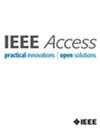Fire and Smoke Detection Based on Improved YOLOV11
IF 3.4
3区 计算机科学
Q2 COMPUTER SCIENCE, INFORMATION SYSTEMS
引用次数: 0
Abstract
Fire and smoke detection is an important measure to ensure the safety of people’s lives and property, as well as a crucial link in maintaining ecological balance and supporting scientific research. Traditional object detection methods rely more on manually designed features and rules. Although they are relatively simple to implement, their performance is limited in complex and variable practical applications. In contrast, deep learning-based methods can automatically learn deep features in data and have higher accuracy and stronger generalization ability. However, complex backgrounds, large environmental changes, and data requirements pose great challenges to high-precision outdoor smoke detection. To address these issues, this paper proposes an improved model, YOLOV11-DH3, based on YOLOV11. In this paper, the core DCN2 (Deformable Convolutional Networks2) of the YOLOV11 Head is replaced with the DCN3 module to form a new detection head. In addition, the loss function CIOU in YOLOV11 is replaced with IOU to consider the irregular shape of fire and smoke and the problem of multi-scale targets. To evaluate the performance of the algorithm, comprehensive experiments were conducted on two distinct datasets: a public fire and smoke dataset provided by Baidu Paddle featuring close-range views and a public wildfire smoke dataset from the YOLO official website with distant outdoor perspectives. The experimental results show that on the Baidu Paddle dataset, the average accuracy of the model is improved by 1.4% compared to the original model, reaching 58%, the F1 score is improved by 2%, reaching 58%, with a precision of 91.6% and recall of 90%. Our cross-dataset analysis provides valuable insights into model performance across different detection scenarios. The proposed model demonstrates the ability to accurately detect fire and smoke in complex backgrounds, and this progress is of great significance for protecting people’s lives and maintaining ecological balance.基于改进型YOLOV11的火灾与烟雾探测
火灾、烟雾探测是保障人民生命财产安全的重要措施,是维护生态平衡、支撑科学研究的重要环节。传统的目标检测方法更多地依赖于人工设计的特征和规则。虽然实现起来相对简单,但在复杂多变的实际应用中,其性能受到限制。相比之下,基于深度学习的方法可以自动学习数据中的深层特征,具有更高的准确率和更强的泛化能力。然而,复杂的背景、大的环境变化和对数据的需求,给高精度的室外烟雾探测带来了很大的挑战。针对这些问题,本文提出了一种基于YOLOV11的改进模型YOLOV11- dh3。本文将YOLOV11头的核心DCN2 (Deformable Convolutional Networks2)替换为DCN3模块,形成新的检测头。此外,将YOLOV11中的损失函数CIOU替换为IOU,考虑了火灾和烟雾的不规则形状以及多尺度目标的问题。为了评估该算法的性能,在两个不同的数据集上进行了综合实验:百度Paddle提供的具有近距离视角的公共火灾和烟雾数据集和YOLO官方网站提供的具有远距离户外视角的公共野火烟雾数据集。实验结果表明,在百度Paddle数据集上,模型的平均准确率比原始模型提高了1.4%,达到58%,F1分数提高了2%,达到58%,准确率为91.6%,召回率为90%。我们的跨数据集分析为不同检测场景下的模型性能提供了有价值的见解。该模型展示了在复杂背景下准确探测火灾和烟雾的能力,这一进展对于保护人们的生命和维护生态平衡具有重要意义。
本文章由计算机程序翻译,如有差异,请以英文原文为准。
求助全文
约1分钟内获得全文
求助全文
来源期刊

IEEE Access
COMPUTER SCIENCE, INFORMATION SYSTEMSENGIN-ENGINEERING, ELECTRICAL & ELECTRONIC
CiteScore
9.80
自引率
7.70%
发文量
6673
审稿时长
6 weeks
期刊介绍:
IEEE Access® is a multidisciplinary, open access (OA), applications-oriented, all-electronic archival journal that continuously presents the results of original research or development across all of IEEE''s fields of interest.
IEEE Access will publish articles that are of high interest to readers, original, technically correct, and clearly presented. Supported by author publication charges (APC), its hallmarks are a rapid peer review and publication process with open access to all readers. Unlike IEEE''s traditional Transactions or Journals, reviews are "binary", in that reviewers will either Accept or Reject an article in the form it is submitted in order to achieve rapid turnaround. Especially encouraged are submissions on:
Multidisciplinary topics, or applications-oriented articles and negative results that do not fit within the scope of IEEE''s traditional journals.
Practical articles discussing new experiments or measurement techniques, interesting solutions to engineering.
Development of new or improved fabrication or manufacturing techniques.
Reviews or survey articles of new or evolving fields oriented to assist others in understanding the new area.
 求助内容:
求助内容: 应助结果提醒方式:
应助结果提醒方式:


